24+ Sample Curriculum Vitae Format
-
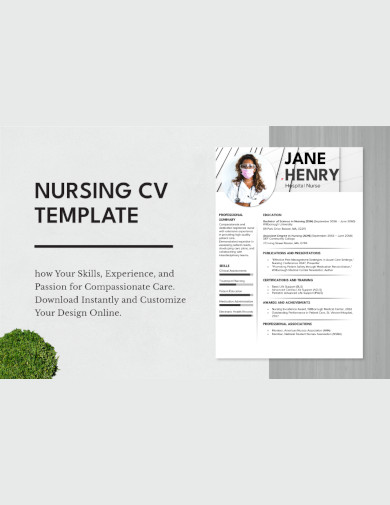
Nursing CV Format
download now -
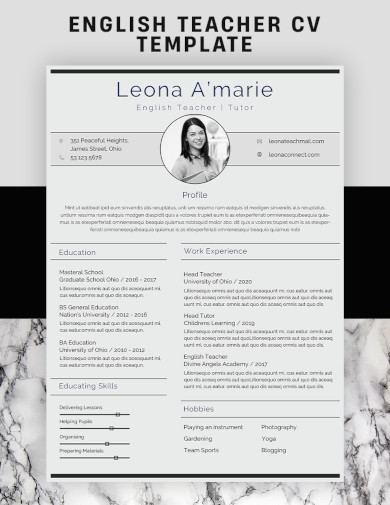
English Teacher CV Format
download now -
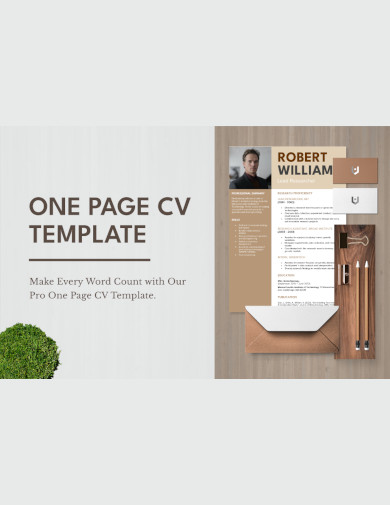
One Page CV Format
download now -
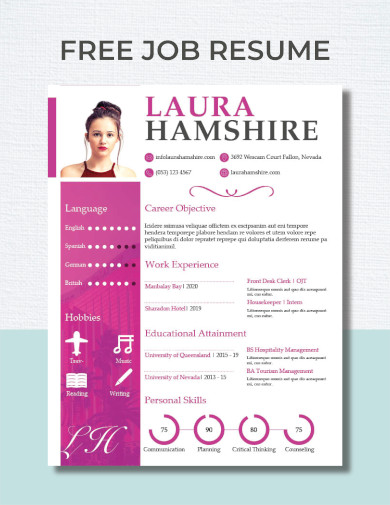
Job Resume / CVFormat
download now -
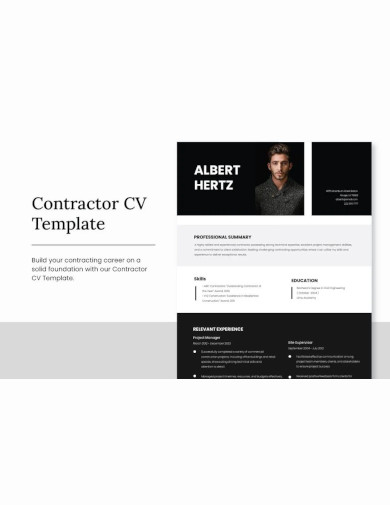
Contractor CV Format
download now -
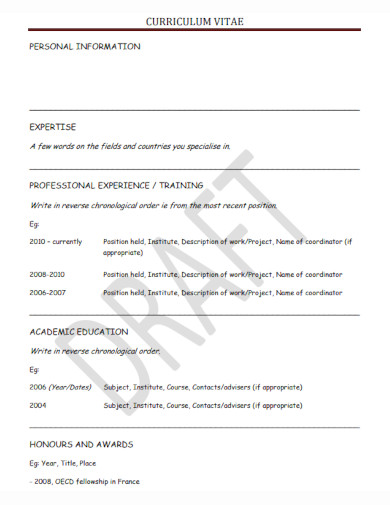
Curriculum Vitae Format
download now -
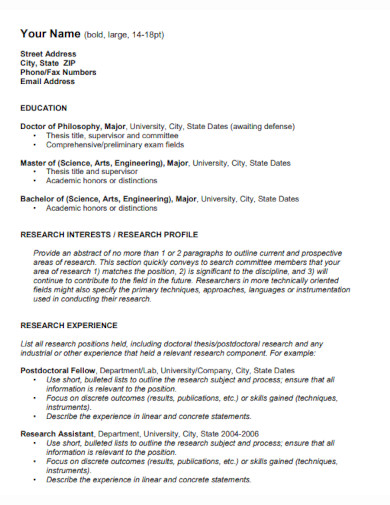
Academic Curriculum Vitae Format
download now -
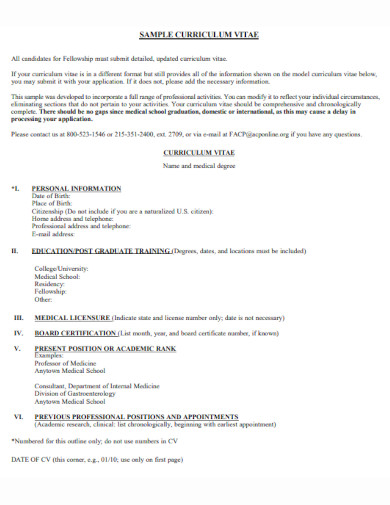
Sample Curriculum Vitae Format
download now -
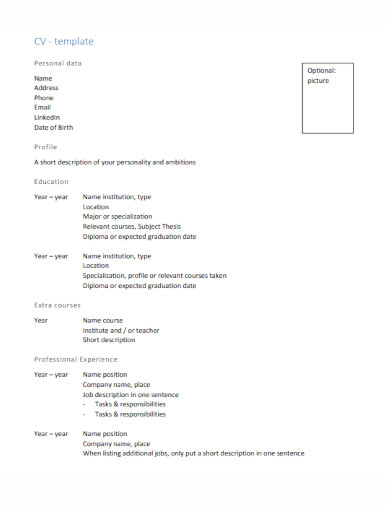
Simple Curriculum Vitae Format
download now -
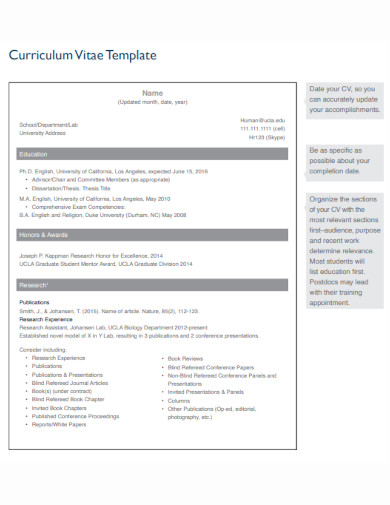
Basic Curriculum Vitae Format
download now -
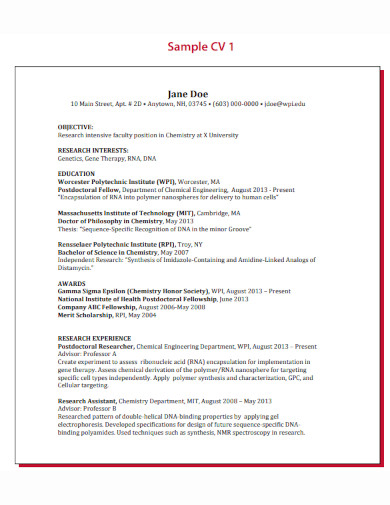
Formal Curriculum Vitae Format
download now -
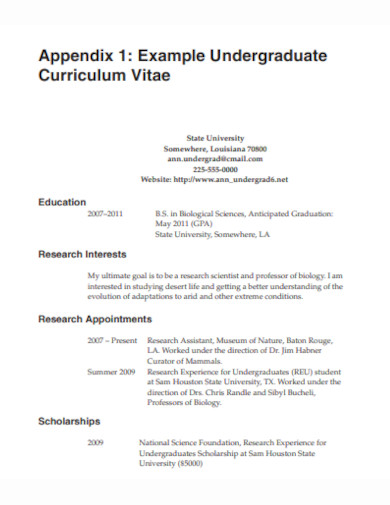
Undergraduate Curriculum Vitae Format
download now -
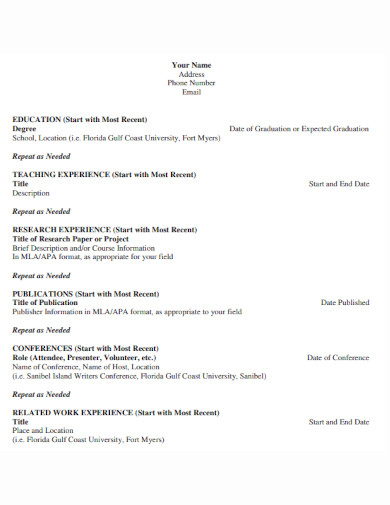
Experienced Curriculum Vitae Format
download now -
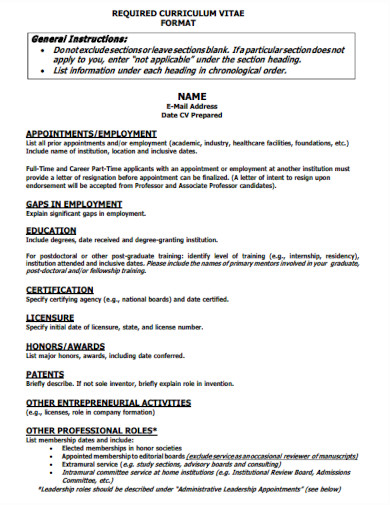
General Curriculum Vitae Format
download now -
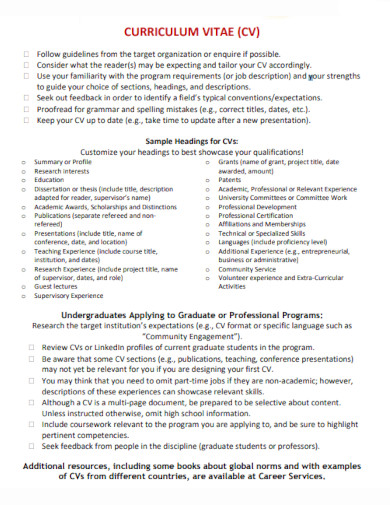
Printable Curriculum Vitae Format
download now -
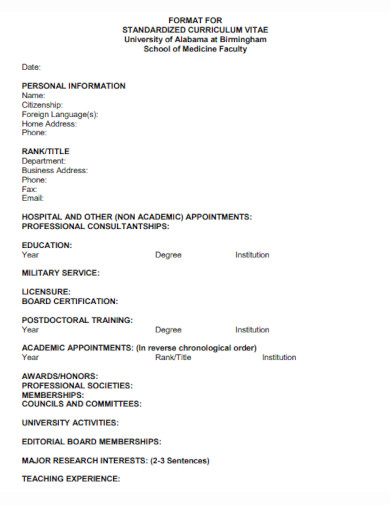
Standard Curriculum Vitae Format
download now -
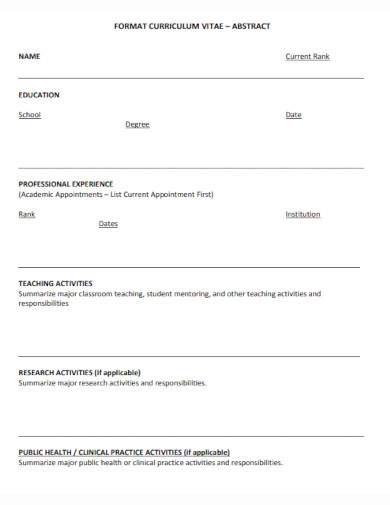
Abstract Curriculum Vitae Format
download now -
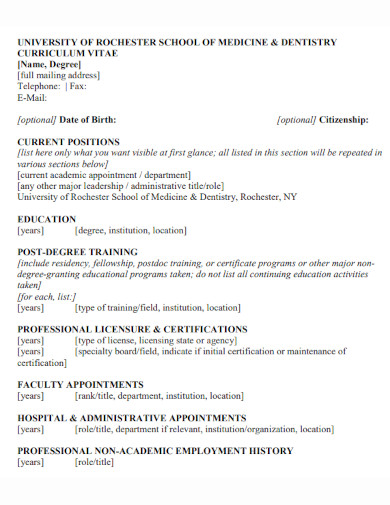
University Curriculum Vitae Format
download now -
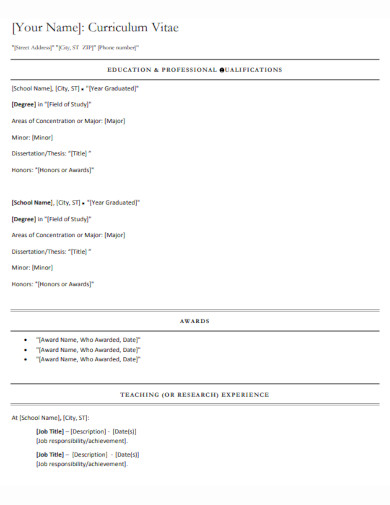
Editable Curriculum Vitae Format
download now -
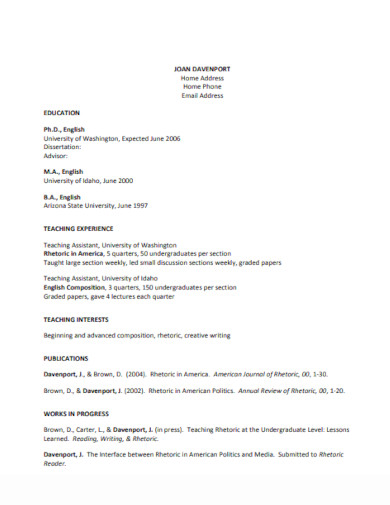
Professional Curriculum Vitae Format
download now -

Curriculum Vitae Example Format
download now -
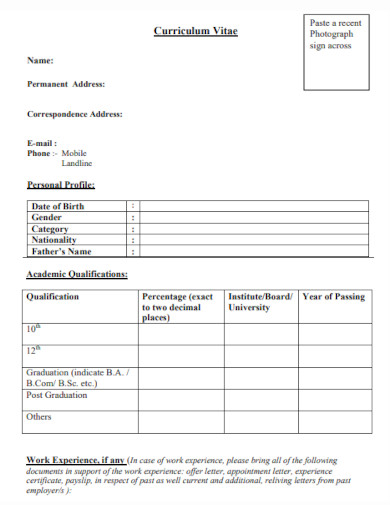
Blank Curriculum Vitae Format
download now -

School Curriculum Vitae Format
download now -
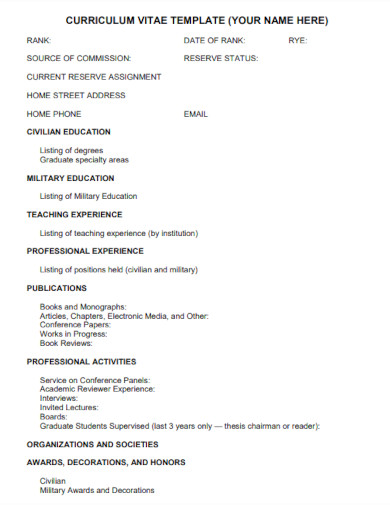
Modern Curriculum Vitae Format
download now -
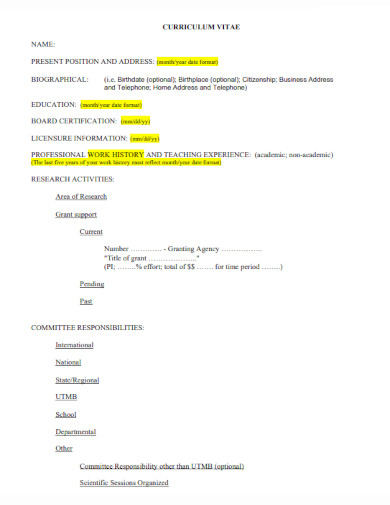
Student Curriculum Vitae Format
download now
What Is a Circurriculum Vitae?
A curriculum vitae is a document job applicants use to highlight their academic and professional achievements. It is used to apply for positions requiring specialized knowledge or expertise. A curriculum vitae is typically longer than a resume and must contain the information needed to verify an applicant’s skills, work experience, and educational qualifications. A CV is typically the first document a prospective employer reviews when screening candidates for job interviews, scholarship programs, grant applications, or bursaries in some countries. Applicants may submit a curriculum vitae and other application materials via registered mail or email, depending on the instructions provided by the prospective employer in the job advertisement.
Benefits of Creating a Circurriculum Vitae
In the context of your career, your resume should serve as the purple bovine. While a cover letter is an introduction, your curriculum vitae should distinguish you from the hundreds of other candidates competing for the same position. It is one of the communication tools that summarize your career-long skills and experience, makes a favourable impression on recruiters, and lands you your ideal job. Here are several advantages of having a well-crafted resume.
Components of a Curriculum Vitae
The information in the CV may vary from applicant to applicant, as some applicants may choose to include only the information pertinent to the position they are pursuing. The typical components of a curriculum vitae are as follows:
1. Personal Information
Include your full name and contact information at the top of the resume. In addition, the Education section includes a list of your education programs and the years and name of the institution you attended. You should have information about the colleges, graduate schools, post-graduate institutions you attended, the courses you took, and the year you graduated. Some employers may also require you to list your grades and awards at each level of education. Employers use the education information to determine if your professional qualifications align with the position’s requirements.
2. Work Experience
Recent work experience relevant to the position you are applying for must be listed in the work experience section. For each position you’ve previously held, list the employer, your specific responsibilities, and the duration of your employment. Also, be sure to include a summary report of the duties you conducted at each company and any accomplishments or awards received. List the pertinent work experience beginning with your most recent position.
3. Honors and Awards
If you have received any academic or previous employment-related accolades, please enumerate them here. The awards may consist of dean’s awards, honorary degrees, presidential awards, professional certifications or awards, and employer-awarded honors for excellence.
4. Skills
If you possess specific skills that you must mention in other sections of your resume, list them here. The skills may include language, computer, transportation, and advanced software knowledge, among others. They should be pertinent to the position for which you are applying.
5. Publications and Presentations
Include any academic or conference papers you’ve published in this section. You should include documents you have written solely, those you have co-authored, and those you have contributed to. Remember to include the paper’s title, publication date, and, if applicable, co-authors’ names. Include papers presented at conferences and associations, along with the paper’s title, the conference’s name, and the date the report was submitted. This section is required for academic position applications.
6. Professional Memberships
Potential employers may require applicants to be members of particular professional organizations. This section pertains primarily to positions such as accountants, engineers, surveyors, IT specialists, etc. List all the professional organizations and associations you belong to and your current membership agreement and status.
How to Prepare Before Submitting Your Curriculum Vitae
A CV is a crucial document for which you must know how to prepare. It should be written differently than other people suggest. It should only include your most vital assets and the factors that would convince someone to hire you for the position you are applying for. It should be a neat and well-designed document that contains only the information that should be included in a brief biography, such as the candidate’s basic information, the position for which they are applying, their education, additional education, talents, awards, certifications, and similar information. All other sections are an extra burden and decision for the author of this document. There are several factors to consider when creating a CV.
1. Modify It
Finally, you’ve discovered a job you’re interested in applying for! Now is the opportunity to sit down and thoroughly review the job description. It is common knowledge that a resume tailored to a specific job opening is the most effective method to land an interview. If you are serious about obtaining your ideal job, you must pay close attention to the skills and capabilities specified in the job description. Then, emphasize these skills on your resume to demonstrate why you are an ideal candidate. Always be truthful on your resume regarding your work experience and abilities. If you lack a particular skill the employer seeks, demonstrate your suitability for the position in other ways.
2. Proofread It
Occasionally, not even the beneficial “spell-check” feature can save you from the numerous grammatical and spelling errors that could be hiding in your resume. Consequently, it would help if you took the time to proofread your resume multiple times. Choose a day when you have ample time and few distractions, and read your resume attentively from top to bottom.
3. Have Someone Else Check the Proofs
It is common for someone to review their resume numerous times only to discover a grammatical error upon submission. Because of this, you should always have another person proofread your resume. Let’s be honest: some errors will slide through the cracks regardless of how good you are at proofreading. Select a proofreader who is dependable, trustworthy, and invested in your job search. Additionally, ensure that this individual possesses exceptional comprehension and communication skills.
4. Check for Discrepancies
Consistency is essential when crafting the ideal resume. Before submitting your resume, you should check for inconsistencies, including formatting, font style, font size, verb tense, margin size, indent size, bolded words, italicized words, etc. Most of the time, the person perusing your resume will decide whether they are interested within 10 seconds. If you carefully format your resume, you can easily direct the reader’s attention to the most essential information.
5. Double Check Your Contact Information
You have customized your resume, checked for inconsistencies, and proofread it a thousand times. The recruiter is highly impressed with your resume and wishes to schedule an in-person interview. They call the number listed on your resume only to discover that it needs to be corrected. If a hiring manager or recruiter is intrigued by your resume, they will likely save it before contacting you. Remember that the file name will be visible to the recipient once your resume is downloaded. Consequently, it is best to appropriately title your resume when storing it as a Word document or PDF.
FAQs
Why is it important to be ethical when compiling your curriculum vitae?
It is essential that all information reported on the document be accurate and supported by facts in case you are questioned. A resume is a marketing tool, and I advise job seekers to present their achievements in the most favourable light imaginable.
Does a curriculum vitae have an objective?
If you include a career objective on your CV, you should state it briefly as feasible. The career objective may emphasize skills, education, the population of interest, the career field, the type of organization, the position title, or the functional area.
Does curriculum vitae have work experience?
Work experience in a CV is a section describing your previous employment. This section should include information about each position you’ve held, including duties and responsibilities.
CVs serve multiple functions. As we have seen, a resume’s functionality differs from the applicant’s perspective to that of the recruiter. It is best to focus on what a summary does halfway between what it does for you and what it does for the employer: obtaining an interview. Recognizing that the purpose of the sample resume is not to land you a job helps you structure your resume more persuasively. Knowing that you must provide just enough information in a specific and measured manner will prevent you from writing pages of irrelevant knowledge.
